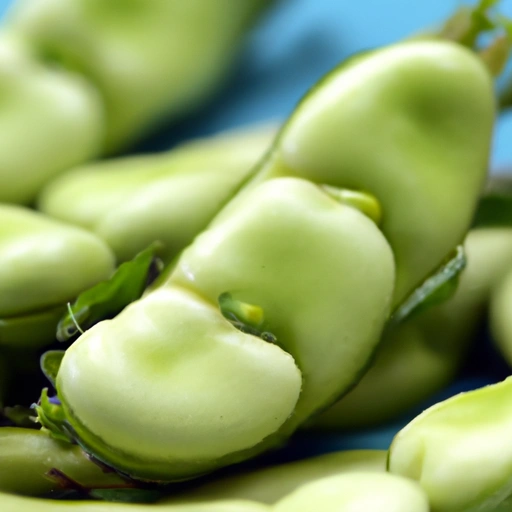Fresh Fava Bean
Description

Fresh fava beans, also known as broad beans, are a springtime delicacy with a creamy texture and nutty flavor. As a culinary ingredient, they are highly prized for their versatility in dishes and are a staple in various cuisines around the world. Shelling them can be a labor-intensive task, but their unique taste and nutritional benefits make them well worth the effort.
Common uses
Fresh fava beans are commonly used as a primary ingredient in salads, soups, stews, and spreads. They can also be found as a side dish, mashed into a puree, or mixed with other vegetables. In certain cultures, fava beans are traditionally consumed during celebrations and are often paired with other seasonal produce.
Nutritional value
Calories
A 1 cup (170g) serving of raw fava beans provides approximately 187 calories.
Protein
That same serving has about 13 grams of protein, making it a good source of plant-based protein.
Fat
Fresh fava beans contain about 0.7 grams of fat per cup, predominantly polyunsaturated and monounsaturated fats.
Carbohydrates
With 33 grams of carbohydrates and an impressive 9.2 grams of dietary fiber, fava beans are an excellent source of complex carbs.
Vitamins
They are rich in folate, providing about 44% of the daily recommended value, and also contain vitamins A, C, and K.
Minerals
Fresh fava beans offer a range of minerals including iron, magnesium, potassium, and zinc.
Health benefits
Fava beans are known for their high fiber and protein content, which can aid digestion and help maintain muscle mass. The folate in fava beans supports DNA synthesis and repair, and the potassium content helps regulate blood pressure. Their antioxidant properties can also contribute to reducing oxidative stress and inflammation in the body.
Potential risks
One potential risk associated with fava beans is favism, a genetic condition that can lead to a hemolytic reaction when consuming the beans. Additionally, those taking MAOI inhibitors should avoid fava beans due to their high tyramine content.
Common recipes
Fava beans are featured in recipes like the Middle Eastern 'ful medames', Italian 'fava bean puree', and the British 'broad beans on toast'. They are also a key ingredient in the French 'salade niçoise'.
Cooking methods
Fresh fava beans can be boiled, steamed, sautéed, or roasted. They need to be shelled and the waxy outer coating removed before cooking to reveal the bright green bean inside.
Pairing with other ingredients
Fava beans pair well with ingredients like mint, garlic, olive oil, pecorino cheese, and cured meats. They also complement other spring vegetables like asparagus and peas.
Summary
Fresh fava beans are a nutritious and historical legume with a variety of culinary uses. From their creamy texture to their rich, nutty flavor, they add depth to any dish. Whether used in traditional recipes or as a component in contemporary cuisine, fava beans are a versatile ingredient that enhances the taste and nutritional profile of your meals.